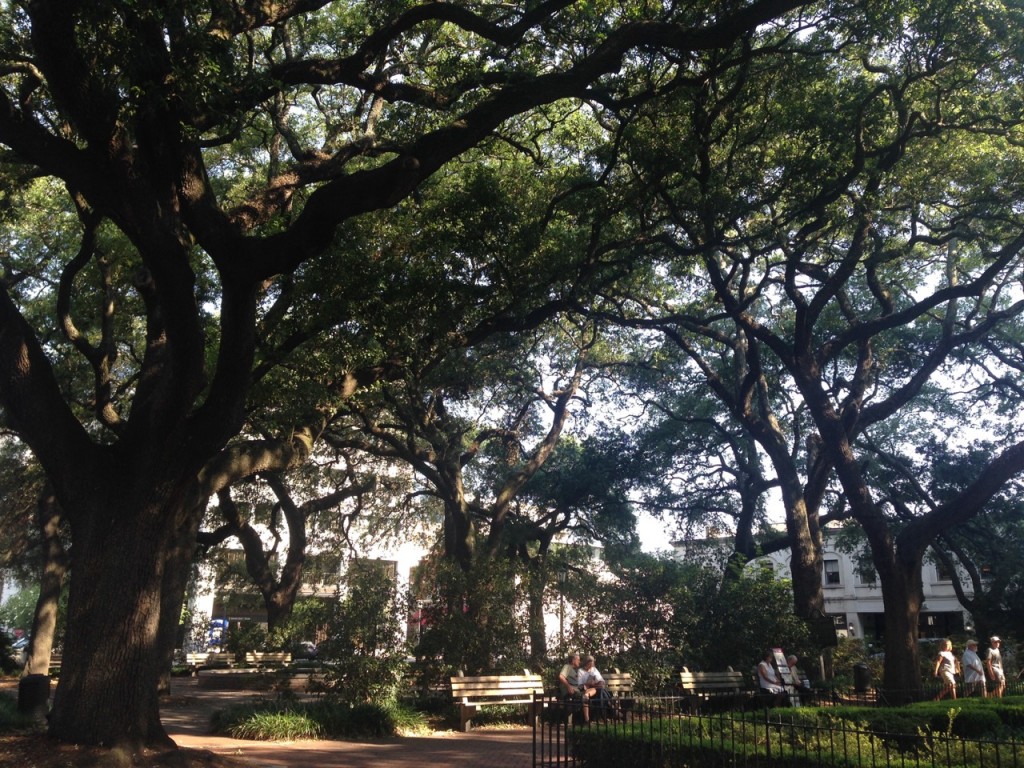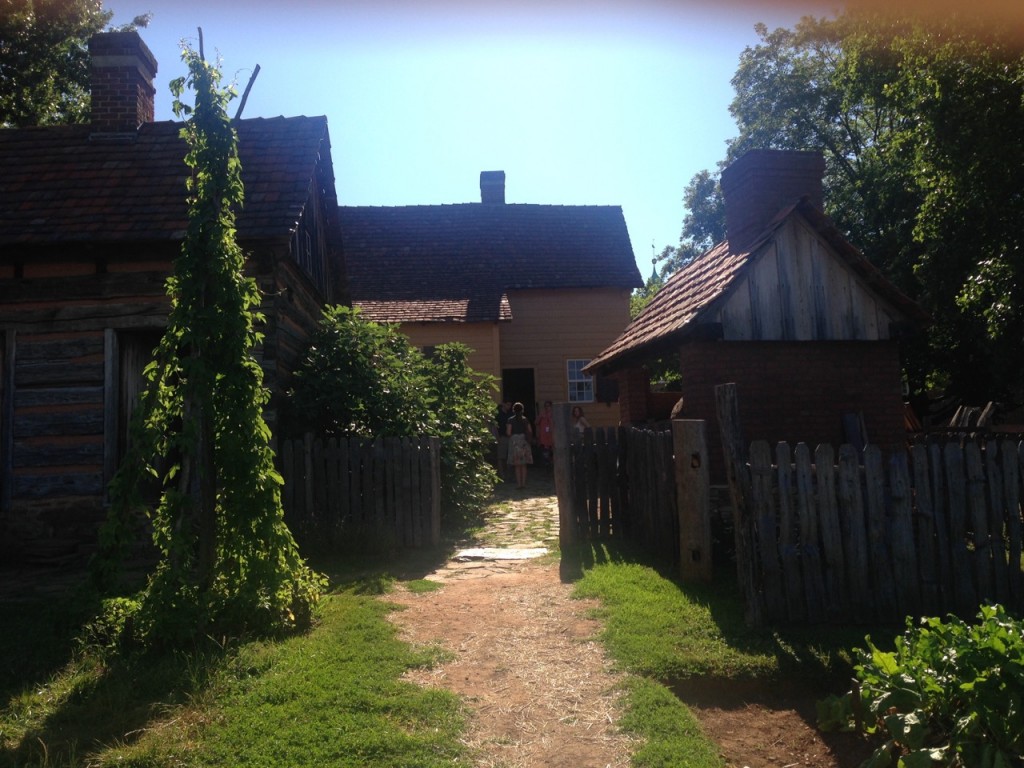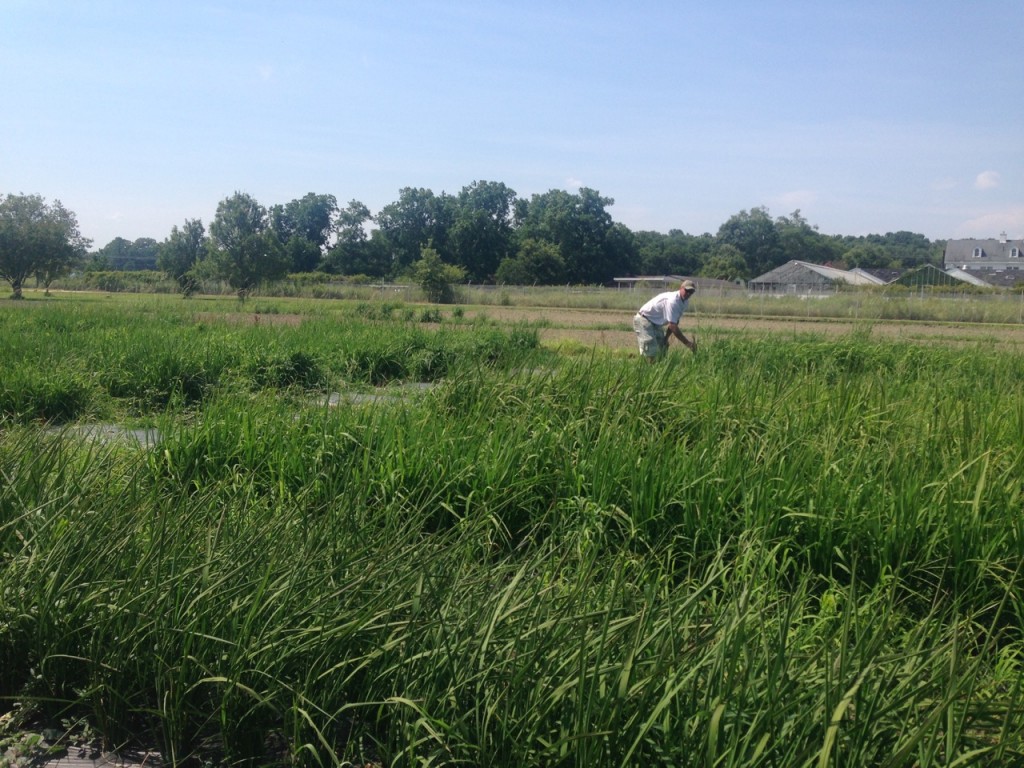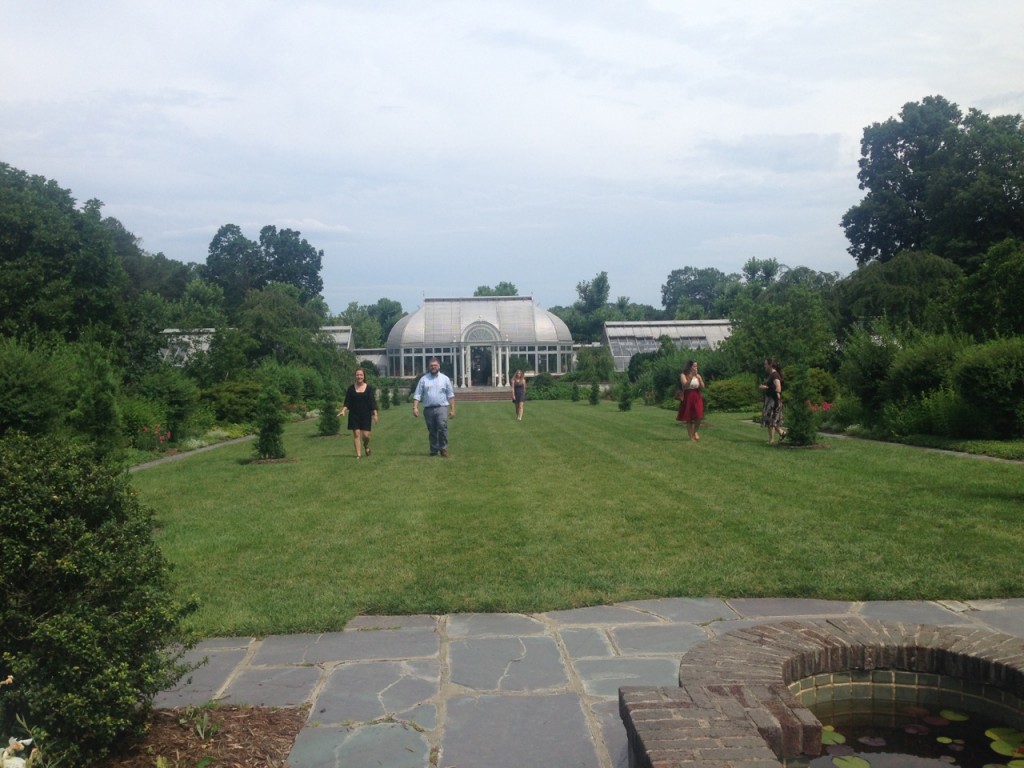The Material Culture of the Southern Landscape
A garden at the Woodrow Wilson house, Columbia, SC
As students lucky enough to call the Winterthur Museum our classroom, our daily drive through the estate is a constant reminder of the role that landscape played in Henry Francis DuPont’s life. Winterthur’s gardens remain integral to the museum’s interpretation of his life story, and it is easy to perceive the delight they bring to its visitors. During the 2016 June field study, I was struck by how many of the southern sites we visited also placed significant emphasis on landscape when building their interpretation. These sites, which consider domestic gardens, native and experimental botany, and urban planning, seem to have found a way of connecting the past so that it feels present, living, and valuable.
A green square in Savannah
One unexpected example of this was in Savannah, Georgia. As Fellow Elisabeth Meier outlined in a previous post on this site, we traversed the city with architectural historian David Gobel and learned about the vital role of the city’s public green squares in its development. Furthering this discussion, the squares also speak to the way that its inhabitants currently, and historically, have inhabited urban space. During the nineteenth-century, the integration of public squares every few blocks allowed citizens to practice a vital act of social performance: promenading. These leisurely strolls through the city allowed for material display, social interaction and exercise. As we took our own meander through city, we observed how the squares and their magnificent trees serve as reminders of a social custom integral to Savannah society, while also making up an iconic part of the city’s aesthetic.
Above: A view of the hops plant (left) at the Miksch house at Old Salem. Below: A portion of the kitchen garden at the Miksch house
During our trip, we also encountered several sites whose efforts to revive their historical gardens have yielded fascinating results and provided an avenue for connecting with the larger community. The Miksch House of Old Salem, North Carolina, for example, has planted an eighteenth-century kitchen garden drawing from period Moravian accounts. The garden contains both native and foreign plants, representing the global trade of the period which brought specimens from Europe, Asia and Africa to American soil. Not only do the crops tell us about the eighteenth-century Moravian diet, but also the rhythms of everyday life. By enacting a cycle of planting, harvesting, preservation and cooking, the museum is able to illustrate the seasonal activity of the household. In addition to serving as a learning aid for the museum, the garden provides food to local restaurants and cooking demonstrations are other historic sites. This makes the Miksch garden not merely for show, but a valuable component to the local economy.
Heirloom rice growing at the Clemson University Coastal Research Center, Charleston, SC
We continued to learn about native and experimental botany while exploring southern foodways with historian David Shields. As discussed in a previous post, we dined at Charleston restaurant Husk, followed by a visit to the Clemson University Coastal Research and Education Center, which supplies the former with certain native specimens. The juxtaposition of these two visits showed us how the revival of historic South Carolinian crops has renewed a sensorial element of the eighteenth century.
The fellows stroll through the formal gardens at Reynolda
Last, but certainly not least, we found yet another example of community engagement through landscape at the Reynolda House in Winston-Salem. The mansion’s formal gardens are beautifully maintained and contribute to our understanding of early twentieth-century landscape design. One portion of the land, however, is now allocated to community gardening. Members can use the space for their own gardening pleasure, and in turn, contribute to the continued vibrancy of the Reynolda site.

Beautiful and sprawling live oaks with Spanish moss are a common sight. This one flanks a visitor center in South Carolina.
One of the many lessons I took away from this year’s southern trip is the ample opportunity for interpretation found in a site’s landscape. In a moment where historic house museums struggle to redefine their relevancy within their communities, the development and interpretation of gardens and landscapes holds potential for fresh ways of connecting with visitors – whether by creating a space for botany lovers to visit, for gardeners participate in, or by providing products for the community. Through the garden, historic sites remain living and thriving places, proving their continued value to the communities they inhabit.
By Lan Morgan, WPMAC Class of 2017
All photos courtesy of WPAMC fellows







Leave a Reply